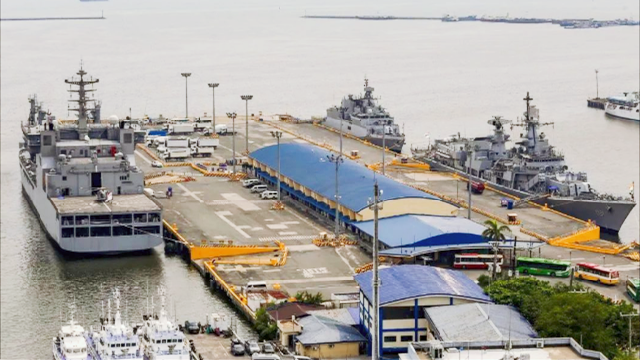By Yuan Mengting

Three Indian naval warships arrive in Manila, the Philippines on May 19, 2024. (Photo fromThe Paper)
Recently, the Indian Navy's guided missile destroyer INS Delhi, supply ship INS Shakti, and anti-submarine warfare corvette INS Kiltan arrived in the Philippines. According to India, this deployment is part of a long-range mission in the South China Sea aimed at strengthening maritime partnerships with friendly countries. The Indian Navy conducted joint drills with the Philippine Navy last December and India has been intensifying its military cooperation with the Philippines for some time. What are the considerations of the two countries?
Military observer Zhou Weizheng believes that the reason for India and the Philippines to hold two joint drills within half a year is that India attempts to further disrupt the situation in the South China Sea and embolden the Philippines to make provocations.
Zhou said that although the two sides did not release specific details of the drills, considering the strength of the Philippine Navy, the two sides are not on the same level and thus it is difficult for them to conduct high-quality joint exercises. For instance, the Philippines just dispatched a second-hand patrol vessel during last year's joint drill with the Indian Navy. The Philippine Navy's capabilities are quite limited, making it challenging to engage in substantial joint exercises with the Indian Navy. The joint exercises are mainly focused on basic activities such as maritime communication and formation sailing, with the primary aim of making some noise and exerting influence.
In addition to joint exercises, India delivered the first batch of BrahMos missiles to the Philippines in April this year, which is India's largest single defense export order to date.
Zhou believes that India's attempt to extend its military reach into the South China Sea is driven by its strategic consideration of "using the sea to control the land."
According to Zhou, India only dispatched vessels to the South China Sea now and then to assert its presence in the past. However, in recent years, the Philippines has continuously stirred up trouble in the South China Sea, deliberately inducing external forces to create disturbances, which coincidentally supports India's South China Sea strategy. As a result, India has significantly increased its military presence, conducted joint training and exercises with the Philippines, and sold coastal defense missiles to the Philippines at very favorable prices to help enhance its long-range strike capability against maritime targets. Under the guise of helping the Philippines safeguard its maritime rights, India is intentionally disrupting the situation in the South China Sea.
As a Chinese adage goes, "Interests wane and power withers. Relations only endure for those who stay heart-to-heart." The relationship of mutual utilization between India and the Philippines cannot last long.
Zhou further pointed out that although the Philippines appears to have gained substantial support by acquiring radars, ships, missiles, and other equipment at favorable prices, there is no such thing as a free lunch. The US, Japan, and India all regard the Philippines as a pawn in their strategic layouts in the South China Sea and the Asia-Pacific region. They will use the Philippines when it has value, but when danger arises, this pawn can be abandoned anytime. This relationship based on mutual utilization cannot last long, and if the Philippines fails to recognize this, it will bring significant risks to its own security, economic development, and the welfare of its people.
Editor's note: Originally published on cnr.cn, this article is translated from Chinese into English and edited by the China Military Online. The information and opinions in this article do not necessarily reflect the views of eng.chinamil.com.cn.













